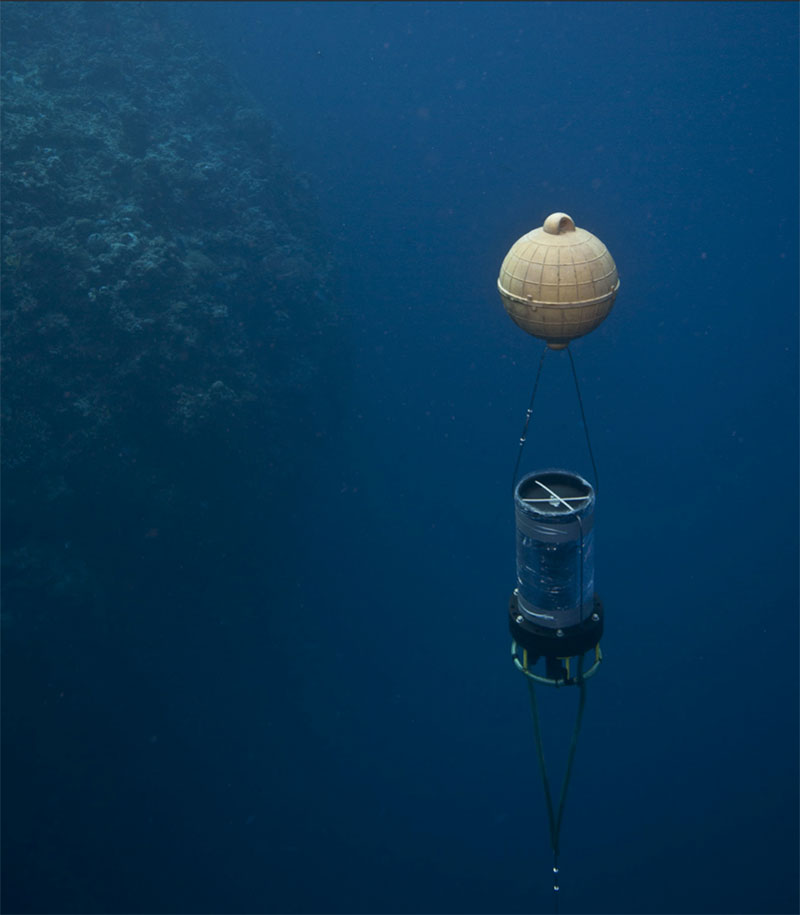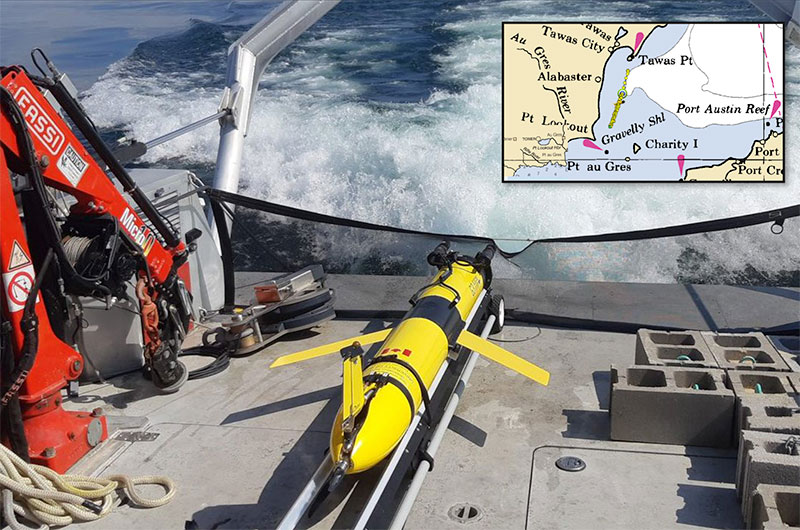Tracking fish can be an incredibly challenging task. Fish live in a very dynamic environment and are always on the move. Tracking their movement and collecting data relating to their environment is important to the understanding and preservation of species but requires skill and the right equipment.
Now researchers from the University of Windsor in Ontario Canada are using cutting-edge technology to do just that for a species of fish in Lake Huron. With support from the Real-Time Aquatic Ecosystem Observation Network (RAEON), scientists are tracking juvenile cisco commonly known as lake herring. Recently researchers have just upped their game to track these tagged fish in the Great Lakes, and Teledyne Webb’s Slocum Gliders and Teledyne Benthos’ Acoustic Modems are playing a vital role in this research.
 A deployed Innovasea VR4-UWM receiver passively detects tagged fish as they swim into the area.
A deployed Innovasea VR4-UWM receiver passively detects tagged fish as they swim into the area.
For several years, the University of Windsor has been conducting research using Innovasea’s VR2W (Wireless), which is used for tracking and recording tagged fish populations. The VR2W, now upgraded to VR4-UWM (Under Water Modem) is a submersible receiver capable of identifying all Innovasea coded transmitters and communicating that data remotely to a surface modem on demand. All subsea data is transmitted via a fully integrated OEM version of the Teledyne Benthos CM-903 Compact Modem.
Researchers can now take advantage of the new technological breakthrough afforded by the upgraded VR4 Underwater Modem (VR4-UWM). The new module for Teledyne’s G3 Gliders allows the autonomous underwater vehicles (AUVs) to be dispatched out to Innovasea’s VR4-UWM under- water receivers to collect data. The underwater receivers contain a Teledyne Benthos modem that can operate in a data logging mode and hold the data until a glider initiates retrieval via acoustic data transfer. The VR4 receivers can identify any Innovasea coded transmitters and remotely communicate any data to the glider, which then uses the onboard acoustic modem on demand. To communicate with the VR4-UVM receivers Teledyne Benthos UTS-9500 band C deck box and transducers are required. The Teledyne Benthos deck box has been designed to work with all Benthos acoustic releases, transponders, and modems.
 RAEON’s Slocum glider, Sturgeon, on DFO’s research vessel, Cisco. Image: Department of Fisheries and Oceans. Inset: Transect in Saginaw Bay, Lake Huron to conduct range testing in search for ciscos tagged with VR2C.
RAEON’s Slocum glider, Sturgeon, on DFO’s research vessel, Cisco. Image: Department of Fisheries and Oceans. Inset: Transect in Saginaw Bay, Lake Huron to conduct range testing in search for ciscos tagged with VR2C.
The seabed units communicate with the surface devices and can store more than 800,000 detections, with the ability to be deployed for extended durations. This technology will allow researchers to reduce costs and cut down on ship time. Because the Innovasea VR4-UWM batteries last more than six years, they are ideally suited for long-term migratory studies and are a flexible and reliable means of recording fish telemetry data. The ability to communicate with nearby vessels via an acoustic modem means it doesn’t need to be retrieved and redeployed, a costly and labor-intensive process.
“This revolutionary new capability will make data retrieval much easier for scientists, who are using autonomous vehicles more and more as part of their research” said Mark Jollymore, President of Innvasea. “Rather than having to charter a boat and spend hours traveling from receiver to receiver, our new module and its sophisticated software let researchers send out a glider to collect data from all their receivers in a fraction of the time.” This is groundbreaking for scientists who have had to rely on chartering vessels to collect data, which has historically been one of the largest expenses in data retrieval. This new technology will allow researchers to reduce costs and cut down on ship time while expanding areas of research.
“This is a game-changer for servicing our deep-water acoustic telemetry receivers in the Great Lakes, a logistically difficult and costly area to work, but so important for understanding fish ecology in these large lakes,” said Aaron Fisk, science director at RAEON and a professor at the University of Windsor.





